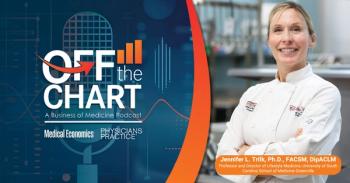
- April 10, 2019 edition
- Volume 96
- Issue 7
Getting off the corporate treadmill
Physicians are thinking outside the box early in their careers.
Editor's Note: Welcome to Medical Economics' blog section which features contributions from members of the medical community. These blogs are an opportunity for bloggers to engage with readers about a topic that is top of mind, whether it is practice management, experiences with patients, the industry, medicine in general, or healthcare reform. The opinions expressed here are that of the authors and not UBM / Medical Economics.
There’s a quiet revolution taking place in healthcare. The dramatic swing of the pendulum over the last 20 years-away from private independent physicians, towards being employees of big corporate healthcare organizations-has not, by any means, been a smooth transition for the nation’s physicians. A quick glance at any healthcare news site will show the growing unease among practicing doctors. They are increasingly looking for ways off of the corporate treadmill, frustrated by the dramatic loss of autonomy and control that they have experienced.
Two examples of healthcare models that are rapidly gaining popularity are direct primary care (DPC) and concierge medicine. Both eliminate the need for insurance and the regulatory middle man and significantly reducing bureaucratic burdens. Watch that space.
Physicians also are moving away from corporate medicine by taking advantage of the supply-demand mismatch that exists in most medical specialties, and independently contracting with healthcare facilities to provide services.
Traditionally, this type of work was done under temporary or “locum” contracts and mostly by doctors at the end of their careers, as a way of “cutting back” on clinical work. But with the surge in healthcare demand over the last few years, savvy physicians can arrange this work on a regular basis for themselves (in many parts of the country and very close to home, too), and are doing much earlier their medical careers.
After only one or two years into practice post residency, an avalanche of physicians are realizing that long-term job satisfaction is almost impossible with the inevitable constant administrative clashes involved in a corporate-type healthcare environment. They are also being bombarded with job opportunities and new career options. So why only be tied to one institution and be reliant on a sole employer for income? Why suffer all the administrative headaches if you don’t need to?
There’s no need to ever feel stuck in a suboptimal situation. Every healthcare facility has pros and cons-but doctors who choose to spread their wings can make sure to get the best possible deal. They can get a variety of inpatient and outpatient experiences, perform well-paid clinical (or even non-clinical) work, and decide on their own ideal mix of work (many are now doing "side" entrepreneurial ventures). But most importantly, doctors can create their own schedule and experience a degree of autonomy and independence again. Is it any surprise then that physicians are jumping on board with this as soon as they can?
Suneel Dhand, MD, is an internal medicine physician, author and speaker. He is the cofounder of DocsDox, a service that helps physicians find local moonlighting and per diem opportunities, bypassing the expensive middleman. He can be reached [email protected]
Articles in this issue
over 5 years ago
The physician-patient relationship has changedover 6 years ago
How to integrate health apps at the point of careover 6 years ago
The rising price of insulinover 6 years ago
Six tips to getting paid for CPT modifiersover 6 years ago
IT services at your practice: In-house or outsourced?over 6 years ago
Your voice: Primary care is dying because burdens are too greatover 6 years ago
New 2019 regulations for BMI codingover 6 years ago
The risk of direct careover 6 years ago
Top 4 healthcare trends for 2019Newsletter
Stay informed and empowered with Medical Economics enewsletter, delivering expert insights, financial strategies, practice management tips and technology trends — tailored for today’s physicians.



















